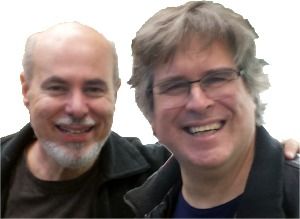Page 11726
Jun 4, 2015
An eagle without a beak got a new one that was printed just for her.
Posted by Lily Graca in categories: biotech/medical, futurism
Jun 4, 2015
Our Universe is Fine Tuned for Life—Why?
Posted by Philip Raymond in categories: astronomy, chemistry, cosmology, gravity, physics, space
Consider how many natural laws and constants—both physical and chemical—have been discovered since the time of the early Greeks. Hundreds of thousands of natural laws have been unveiled in man’s never ending quest to understand Earth and the universe.
I couldn’t name 1% of the laws of nature and physics. Here are just a few that come to mind from my high school science classes. I shall not offer a bulleted list, because that would suggest that these random references to laws and constants are organized or complete. It doesn’t even scratch the surface…
Newton’s Law of force (F=MA), Newton’s law of gravity, The electromagnetic force, strong force, weak force, Avogadro’s Constant, Boyle’s Law, the Lorentz Transformation, Maxwell’s equations, laws of thermodynamics, E=MC2, particles behave as waves, superpositioning of waves, universe inflation rate, for every action… etc, etc.
For some time, physicists, astronomers, chemists, and even theologians have pondered an interesting puzzle: Why is our universe so carefully tuned for our existence? And not just our existence—After all, it makes sense that our stature, our senses and things like muscle mass and speed have evolved to match our environment. But here’s the odd thing—If even one of a great many laws, properties or constants were off by even a smidgen, the whole universe could not exist—at least not in a form that could support life as we imagine it! Even the laws and numbers listed above. All of creation would not be here, if any of these were just a bit off…
Continue reading “Our Universe is Fine Tuned for Life—Why?” »
Jun 4, 2015
Next Big Future: Conceptually Viable Brute Force Radical Life Extension
Posted by Klaus Baldauf in categories: biotech/medical, futurism, life extension
A team of Massachusetts General Hospital (MGH) investigators has made the first steps towards development of bioartificial replacement limbs suitable for transplantation They had used decellularization technique to regenerate kidneys, livers, hearts and lungs from animal models, but this is the first reported use to engineer the more complex tissues of a bioartificial limb.
They took the leg from recently deceased rat and then:
* Over a period of 52 hours, infusion of a detergent solution removes cells from a rat forelimb, leaving behind the cell-free matrix scaffolding onto which new tissues can be regenerated.
Continue reading “Next Big Future: Conceptually Viable Brute Force Radical Life Extension” »
Jun 4, 2015
Are new stem cell therapies miracles in a bottle–or just a dangerous form of snake oil? — Tyler Graham Popular Science
Posted by Seb in categories: biotech/medical, health

On a snowy evening in Brooklyn, New York, sweat is streaming from my pores, rolling down my face, back, and palms. I don’t know what the temperature is here inside the MRI machine, but “summer in the Sahara” seems about right. I keep thinking about how I should have shed my winter-weight pants and button-down shirt.
The lab technician chimes in over a microphone. He reminds me not to move or I’ll need to start the MRI over. Considering I’ve been here for 45 minutes, that doesn’t sound appealing. My eyes sting, and sweat has pooled in weird places. I imagine this is what Chinese water torture feels like. Add to that, I have a gadolinium contrast agent coursing through my body. The substance is supposed to highlight areas of inflammation, but it can also make you feel like you’re itching from within. Read more
Jun 4, 2015
A New York State of Megabits — Susan Crawford | Backchannel
Posted by Odette Bohr Dienel in categories: architecture, big data, business, economics, education, energy, information science, internet, moore's law
So it was great to get back to New York and be able to report on what is called the“New NY Broadband Program.” It involves a $500 million expenditure to help ensure that New Yorkers across the state have access to current-generation Internet capacity. There’s lots of potential in the plan, targeted at providing every New Yorker with access to 100 megabit per second (Mbps) service (10 Mbps uploads) by the end of 2018. Because New York expects a 1:1 match from the private sector for each grant or loan it makes, that means the state hopes to be deploying at least $1 billion on high-speed Internet access infrastructure.
Tag: internet
Jun 4, 2015
Google Wants You to Control Your Gadgets with Finger Gestures, Conductive Clothing — Tom Simonite MIT Technology Review
Posted by Seb in categories: computing, hardware, innovation, materials
Small gadgets such as smart watches can be frustrating to use because their tiny buttons and touch screens are tricky to operate. Google has two possible solutions for the fat finger problem: control your gadgets by subtly rubbing your finger and thumb together, or by swiping a grid of conductive yarn woven into your clothing.
The first of those two ideas works thanks to a tiny radar sensor that could be integrated into, say, a smart watch and can detect fine motions of your hands from a distance and even through clothing. Levi Strauss announced today that it is working with Google to integrate fabric touch panels into its clothing designs. The new projects were announced at Google’s annual developer conference in San Francisco Friday by Ivan Poupyrev, a technical program lead in Google’s Advanced Technology and Projects research group.
Jun 3, 2015
Quantum Entanglement: EPR Paradox
Posted by Philip Raymond in categories: encryption, general relativity, physics, quantum physics, science
When I was a freshman at Cornell University some decades ago, I had a memorable teaching assistant for CS100, the entry level computer programming course taken by nearly every student in Engineering or Arts & Sciences. Gilles Brassard, a French Canadian, is now a chaired math professor at Université de Montréal and a preeminent cryptographer. He has also been inducted into the Royal Order of Canada. I am told that this is a bit like being knighted. In fact, this highest of civilian honors was established by Queen Elizabeth.

The author with Gilles Brassard in 2014
Gilles was a graduate student at Cornell in the mid ’70s. Back then, public key encryption was a radical concept. Named for three MIT professors who described it, RSA is now it is at the heart of every secure Internet transaction. Yet, the new generation of cryptographers refers to RSA as “classical cryptography”. The radicals have moved on to Quantum Cryptography. Gilles and his collaborator, Charles Bennett, are the pioneers and leaders in this burgeoning field. No one else is even pretender to the throne.
In its simplest terms, quantum cryptography achieves a secure communication channel because it relies on a stream of individual particles or “quanta” to convey information. If information is sent without any fat at all—just the minimum physics that can support the entropy—then any eavesdropping or rerouting of a message can be detected by the recipient. Voila! Perfect authentication, fidelity and security. Communication is secure because any attack can be detected.
Jun 3, 2015
How the Tech Behind Bitcoin Could Stop the Next Snowden — Klint Finley Wired
Posted by Seb in categories: bitcoin, encryption, government, hacking, information science, privacy, security

The National Security Agency knows Edward Snowden disclosed many of its innermost secrets when he revealed how aggressive its surveillance tactics are. What it doesn’t know is just how much information the whistleblower took with him when he left.
For all of its ability to track our telecommunications, the NSA seemingly has little clue exactly what documents, or even how many documents, Snowden gave to the media. Like most large organizations, the NSA had tools in place to track who accessed what data and when. But Snowden, a system administrator, apparently was able to cover his tracks by deleting or modifying the log files that tracked that access. Read more












